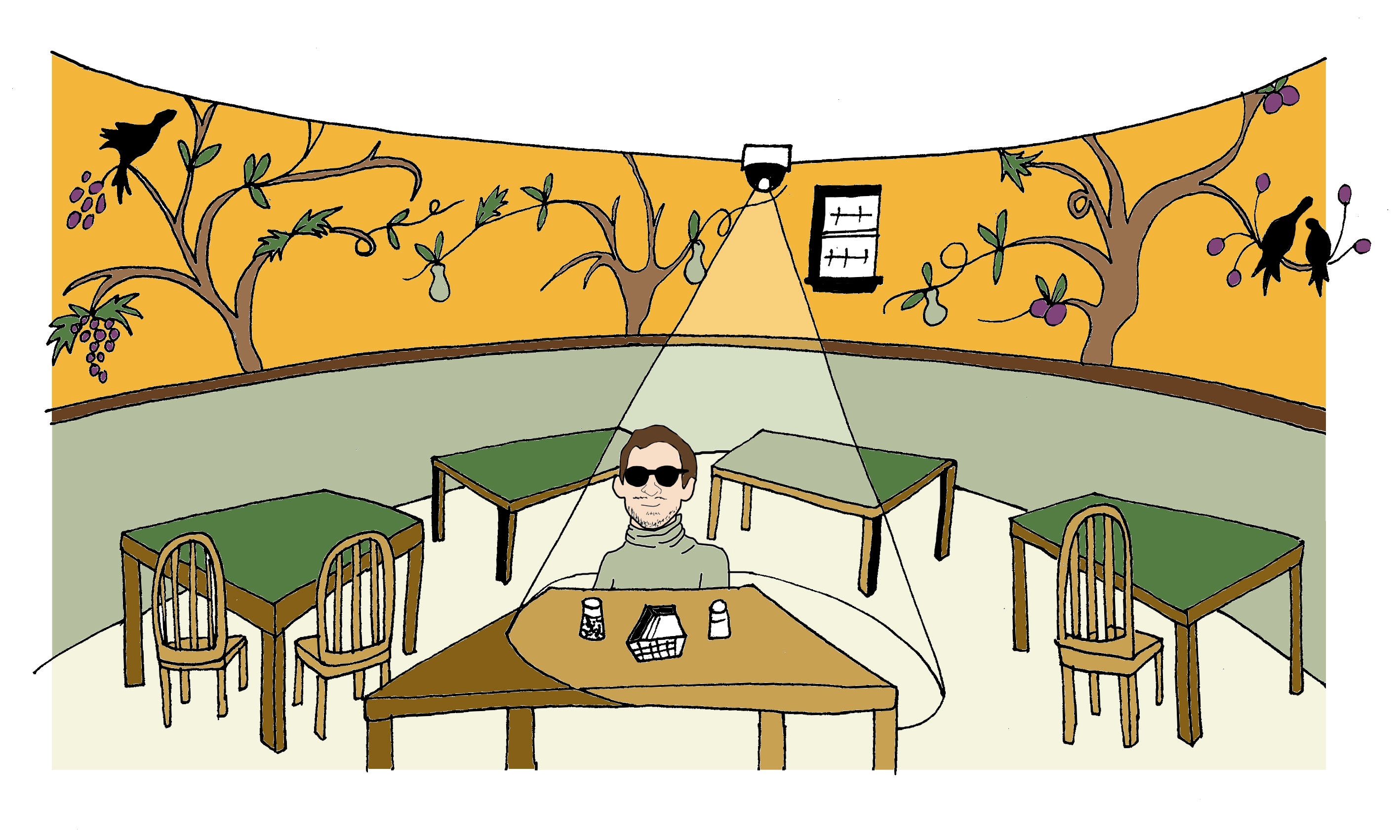Musings on the Moulton light room panopticon
February 23, 2018
 This
piece represents the opinion of the author
.
This
piece represents the opinion of the author
.
 Jenny Ibsen
Jenny IbsenMoulton light room (MLR) is a panoptical experience. Loyal MLR’ers are both inmates and guards, simultaneously watched while watching others. Eyes latch onto us the moment we enter, observing everything from our meal companions to our outfits. I straighten my back and elongate my gait in an act of hyperaware self-discipline. Depending on who is present, I police myself differently. Is it just my friends? Is it first years I don’t need to impress? Is there someone I am looking to impress?
The linoleum tiles are my catwalk. When I enter the light room, I want to be seen. I want people to compliment my revolving set of three turtlenecks or tell me that my butt looks good today. I take my time finding a seat (though I always end up at the same back table under the window). It is a spectacle. As a white able-bodied man fitting conventional beauty standards, I feel comfortable in this space. This enables to me to perform and interact with others in a privileged way.
But I also go to the light room to people watch. Who will so-and-so be eating with? Will they opt for soft serve or a cookie? We soak in the minutiae of our companions, simultaneously making assumptions or passing judgments. Friends know that I always position myself in the back facing the entrance—from this vantage point, I am the prison guard with complete watch over the room.
MLR is an intricate social space, regulated by lunch times and class schedules, but also dictated by friendships and power relations. At Bowdoin, we’re taught to treat meals as a social time, scheduling dinners a week in advance. My first two years, meal anxiety set in three hours before each meal, and I’d text five different friends in attempts to make plans. Sophomore year, I scheduled nearly every meal, using dinners to catch up with friends or meet new people. Now, I rarely make plans, instead sauntering into MLR at my leisure, plopping down next to a friend, or more frequently, pulling out my laptop to work in solitude.
Discussing MLR experiences with some fellow light room occupants, we agreed that the MLR socialization begins sophomore year. Our first year at Bowdoin, we ate in the dark room and Thorne, our decisions prompted by the menus or weekly flinners. Once our friend groups solidified and homogenized sophomore year, no longer artificially diversified by first year floors, we found our place in MLR. As seniors, we gravitate towards MLR because we can show up without plans and always find friends here.
We’ve come to call MLR home because this is where older friends and mentors ate. Our first two years, we looked up to friends who practically lived in MLR. Frequenting MLR was an opportunity to climb the social ladder and become closer to these legends.
Now that they’re gone, we occupy their spots. But MLR has lost its allure now that we’re at the top of the ladder with no more rungs to climb. Yet we still return here, meal after meal, exchanging allure for the comfort of MLR.
The light room is also a comfortable space because we choose who we sit with, creating quasi-familial units composed of homogeneous peers. Look around and notice where people sit and with whom. It is a largely white space (even more so than the rest of Bowdoin), a revolving group of Frisbee players, Reed patriarchs and aloof seniors working on their theses that spend most of their meals together. And I realize that I intersect with these groups and am thus also part of the problem.
For white NARPs, the light room is our safe haven. We are free from the intimidation of our athletic peers in Thorne. White men in particular, myself included, feel powerful in the light room. We chat in the middle of the aisles and spread our laptop and books across half of the table. But we also take up space in other ways, complementing this manspreading with mealtime mansplaining. (I’ll leave this for another column.)
As an upperclassman, I feel a certain command of the space as well as a newfound nonchalance. I returned to MLR fresh from abroad and only recognized a few faces. As the light room dwellers have become less familiar with age, I no longer feel the need to socially engage in the same ways; my bright-eyed, sociable underclass self has been replaced by a reclusive senior.
Our comfort and love for the light room is dictated by our own positionality, be it gender, race, or class year, to name only a few. MLR is much more than a dining hall; it is a place to watch and be watched, where social relations and power dynamics are laid out alongside salad bowls and plates of rice krispies.
Comments
Before submitting a comment, please review our comment policy. Some key points from the policy:
- No hate speech, profanity, disrespectful or threatening comments.
- No personal attacks on reporters.
- Comments must be under 200 words.
- You are strongly encouraged to use a real name or identifier ("Class of '92").
- Any comments made with an email address that does not belong to you will get removed.

Back in my day the light room was the nerdiest of the campus dining spaces. It doesn’t sound like things have changed.